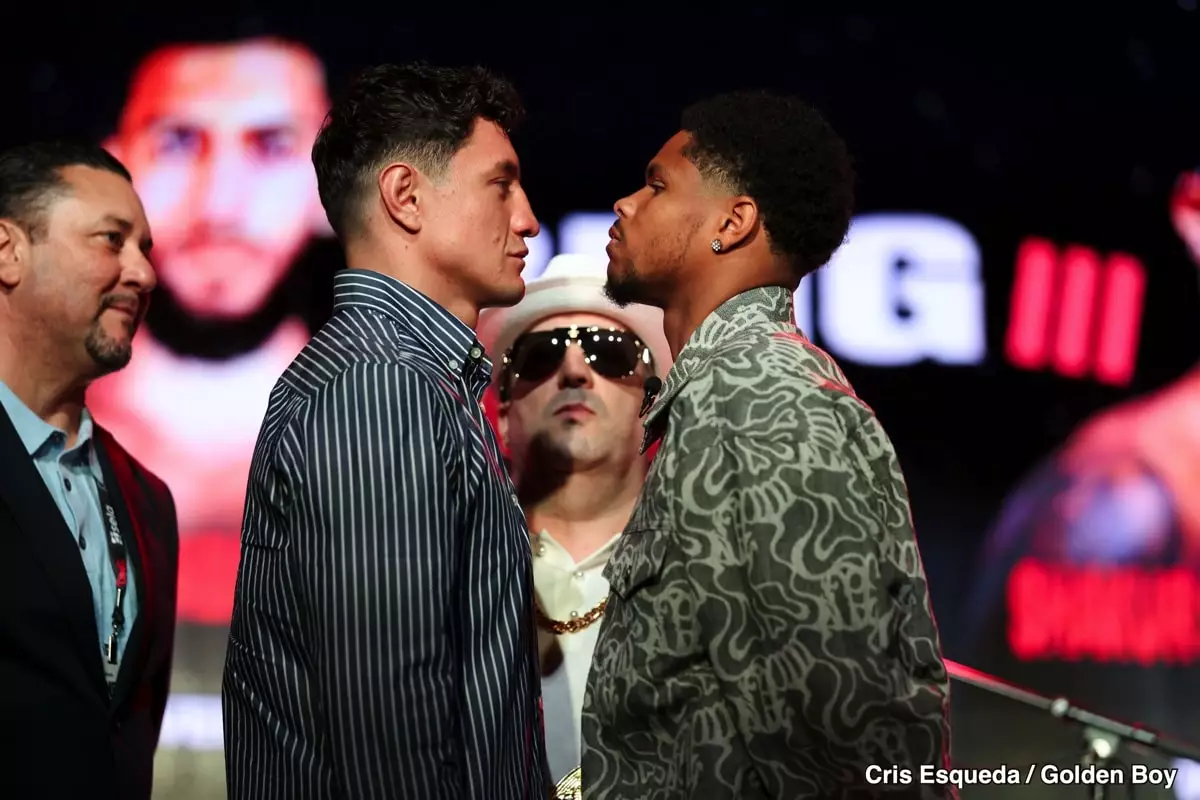Shakur Stevenson, the undefeated wunderkind in the lightweight division, finds himself at a pivotal crossroads that tests both his boxing acumen and the expectations set by fans and analysts alike. Recent commentary from seasoned boxing observer Tim Bradley underscores a nuanced perspective—highlighting not only Stevenson’s tactical approach but also the external pressures that threaten to define his legacy. At the heart of this debate lies a fundamental question: can Stevenson adapt his style to the demands of high-stakes fights, or is his reliance on a cautious, counterpunching, and often defensive repertoire threatening to hinder his growth?
Bradley’s commentary suggests confidence that Stevenson will be able to handle William Zepeda in their upcoming bout at Louis Armstrong Stadium, but it comes with a caveat: Stevenson’s fragile hands. This vulnerability looms large, potentially dictating not only his game plan but also the overall excitement of the event. Such candid insights shed light on a deeper issue—the balancing act between stylistic safety and fan engagement. Stevenson’s reluctance to be more aggressive, especially when faced with a puncher like Zepeda, appears rooted in legitimate physical concerns. Nevertheless, it raises the broader question of whether fighters should evolve beyond their comfort zones to satisfy both competitive and entertainment standards.
Evaluating Stevenson’s approach reveals a pattern: a reliance on movement, frustrating opponents with jabs and quick footwork rather than outright power. While this style garners him victories, it risks painting him as a spectator-friendly fighter only in flashes. Critics might argue that this cautious approach, especially against a proven puncher like Zepeda, diminishes the spectacle and diminishes Stevenson’s potential to be perceived as a truly dominant champion. His previous fights, marked by containment and body shot accumulation, have already faced criticism from those craving more action—particularly when his opponents haven’t posed significant resistance.
Bradley’s mention of the smaller ring—an element influenced by promoter decisions—further complicates the tactical landscape. Smaller rings tend to favor aggressive fighters like Zepeda, who excel at cutting off space and applying pressure. Conversely, they can negate Stevenson’s natural movement-based style. This strategic reduction could inadvertently force Stevenson into an uncomfortable confrontation, risking safety and diminishing his boxing finesse. While a boxer’s style should ideally transcend ring dimensions, in practice, physical and tactical realities often dictate the outcome. Whether Stevenson can adapt seamlessly remains an open question, especially given his history of hand injuries that have interrupted momentum.
The political and managerial implications surrounding Stevenson’s match are equally thought-provoking. The fighters selected for these bouts are rarely chosen purely on merit but are often manipulated to serve a longer-term strategic goal—namely, a lucrative showdown with Gervonta Davis. This matchmaking strategy, although pragmatic from a business perspective, risks sacrificing competitive integrity and individual development. Facing less formidable opponents like Padley and Harutyunyan might keep Stevenson undefeated, but it does little to enhance his reputation as a true pound-for-pound threat. Such cautious scheduling suggests an underlying fear of jeopardizing future mega-fights by risking an upset or loss that could derail plans.
Fan expectations, especially in a boxing hub like New York, heighten the stakes. The local audience demands action, and silence or running tactics are unlikely to sit well in such an environment. Stevenson’s previous fights against lower-tier adversaries have already tested patience—particularly when he resorted to holding and neutralizing rather than engaging. If he employs the same tactics against Zepeda, the backlash from ringside spectators and boxing purists could be immediate and severe. These fans crave the drama, the knockout power, and the willingness to stand toe-to-toe—elements that currently seem peripheral to Stevenson’s strategy.
Moreover, Zepeda’s proven ability to cut off the ring and trap opponents complicates Stevenson’s game plan. Bradley’s assumption that Stevenson will succeed with movement and counterpunching ignores Zepeda’s relentless pressure and ring IQ. If Stevenson chooses to fight defensively, he risks turning the bout into a dull, non-competitive display—something that neither the promoter nor the fans want. Yet, if he does engage more aggressively, it could expose his hand injuries, risking the very physical limitations Bradley mentioned.
The broader narrative revolves around how young fighters like Stevenson are maneuvered within a delicate ecosystem of prestige, health, and financial gain. Avoiding risky fights has become a strategic chess move, but it can also stunt a fighter’s growth and diminish fan enthusiasm. The clash of styles—Stevenson’s finesse versus Zepeda’s pressure—is more than a tactical matchup; it’s a reflection of where modern boxing’s priorities lie. Is the sport about showcasing raw talent and genuine action, or about safeguarding stars until they’re ready for the “big one”?
In this context, Stevenson’s upcoming bout serves as a litmus test. Will he embrace the challenge with vulnerability and passion, or will he retreat behind movement and safety? It’s not just about winning or losing, but about defining what kind of champion he intends to be. As fans, critics, and stakeholders watch closely, the onus is on Stevenson to transcend his current style and demonstrate that he can evolve into a fighter who commands not only victories but also admiration for his bravery and grit.

